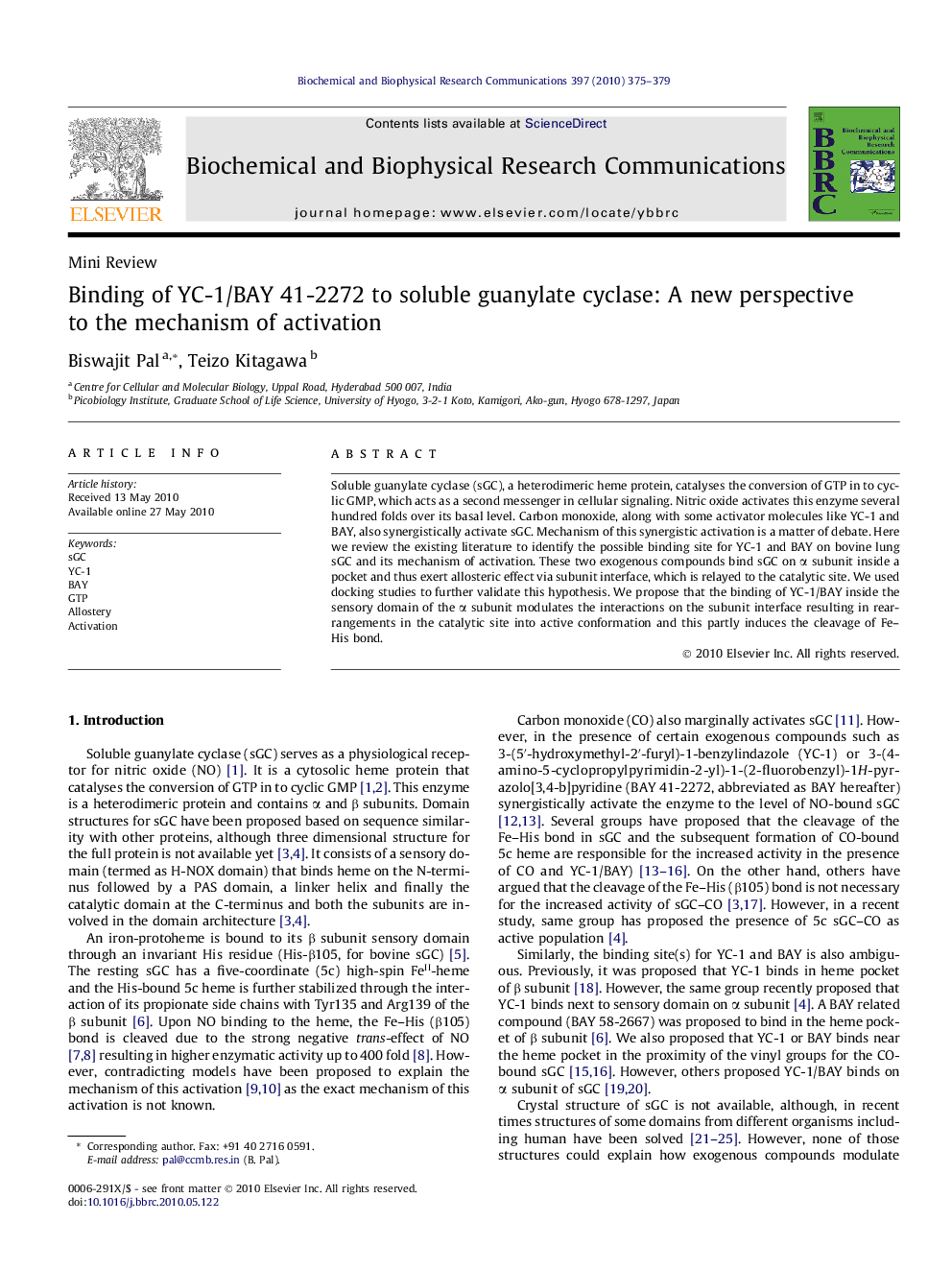| Article ID | Journal | Published Year | Pages | File Type |
|---|---|---|---|---|
| 1931877 | Biochemical and Biophysical Research Communications | 2010 | 5 Pages |
Soluble guanylate cyclase (sGC), a heterodimeric heme protein, catalyses the conversion of GTP in to cyclic GMP, which acts as a second messenger in cellular signaling. Nitric oxide activates this enzyme several hundred folds over its basal level. Carbon monoxide, along with some activator molecules like YC-1 and BAY, also synergistically activate sGC. Mechanism of this synergistic activation is a matter of debate. Here we review the existing literature to identify the possible binding site for YC-1 and BAY on bovine lung sGC and its mechanism of activation. These two exogenous compounds bind sGC on α subunit inside a pocket and thus exert allosteric effect via subunit interface, which is relayed to the catalytic site. We used docking studies to further validate this hypothesis. We propose that the binding of YC-1/BAY inside the sensory domain of the α subunit modulates the interactions on the subunit interface resulting in rearrangements in the catalytic site into active conformation and this partly induces the cleavage of Fe–His bond.
